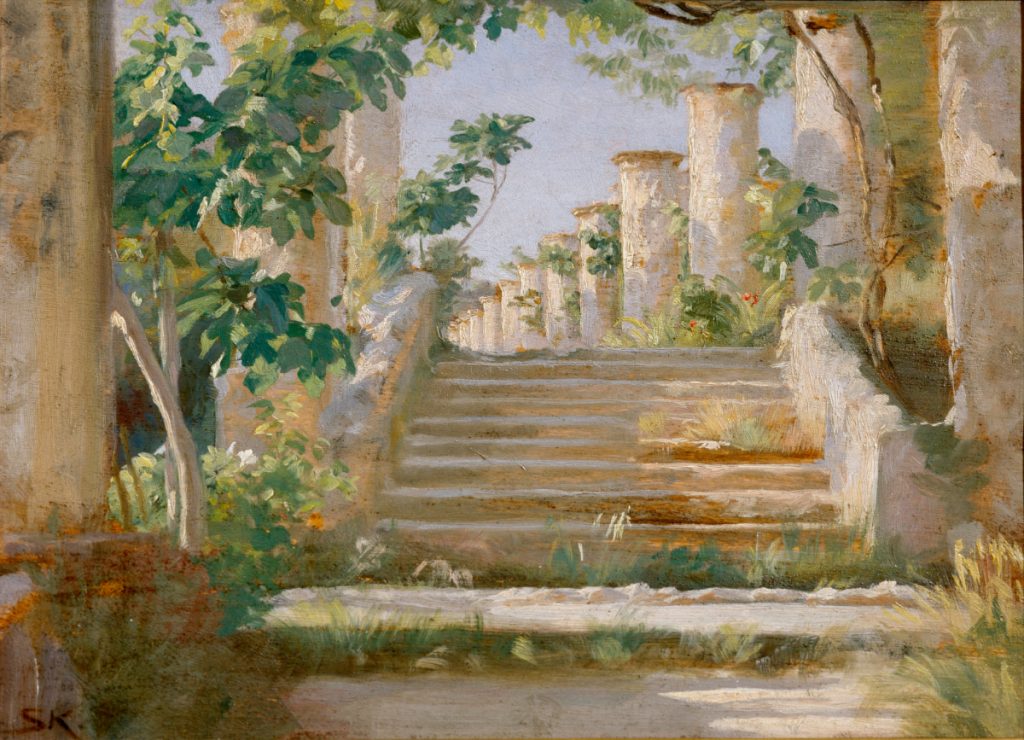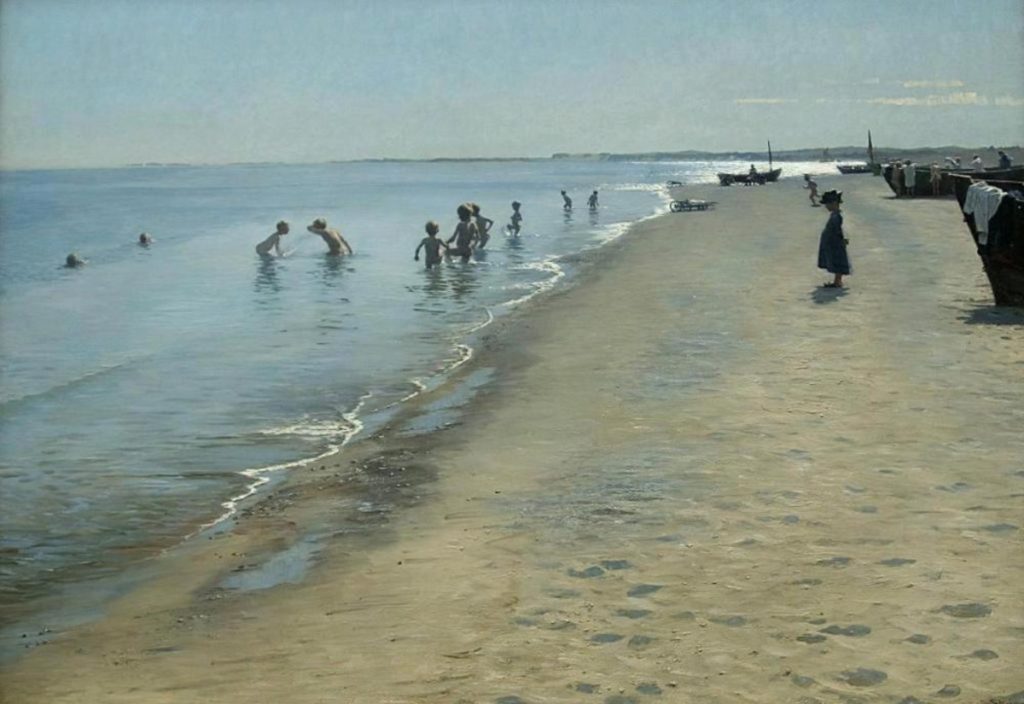
A luncheon. The artist, his wife and the writer Otto Benzon
Summer evening on Skagen’s Beach. Anna Ancher and Marie Krøyer walking together
Memorial Day 2018
Four score and seven years ago our fathers brought forth on this continent, a new nation, conceived in Liberty, and dedicated to the proposition that all men are created equal.
Now we are engaged in a great civil war, testing whether that nation, or any nation so conceived and so dedicated, can long endure. We are met on a great battle-field of that war. We have come to dedicate a portion of that field, as a final resting place for those who here gave their lives that that nation might live. It is altogether fitting and proper that we should do this.
But, in a larger sense, we can not dedicate — we can not consecrate — we can not hallow — this ground. The brave men, living and dead, who struggled here, have consecrated it, far above our poor power to add or detract. The world will little note, nor long remember what we say here, but it can never forget what they did here. It is for us the living, rather, to be dedicated here to the unfinished work which they who fought here have thus far so nobly advanced. It is rather for us to be here dedicated to the great task remaining before us — that from these honored dead we take increased devotion to that cause for which they gave the last full measure of devotion — that we here highly resolve that these dead shall not have died in vain — that this nation, under God, shall have a new birth of freedom — and that government of the people, by the people, for the people, shall not perish from the earth.
Abraham Lincoln
November 19, 1863
Better words were never spoken. Remember the fallen.
The Hirschsprung family portrait
Loggia in Ravello
Osteria in Ravello
Committee for the French Art Exhibition in Copenhagen
Hip Hip Hurrah! Artists’ Party at Skagen
Summer Day on Skagen’s Southern Beach
Fishermen Hauling the Net on Skagen’s North Beach
At the victualler’s when there is no fishing
Artists on the Beach
Peder Severin Krøyer Weeks at TechnoChitlins

Peder Severin Krøyer (Danish pronunciation: [‘peːdə ‘seveʁin ‘kʁøjə]; 23 July 1851 – 21 November 1909), professionally known as P. S. Krøyer, was a Danish painter.
Krøyer was born in Stavanger, Norway, on 23 July 1851 to Ellen Cecilie Gjesdal. He was raised by Gjesdal’s sister, Bertha Cecilie (born 1817) and brother-in-law, the Danish zoologist Henrik Nikolai Krøyer, after his mother was judged unfit to care for him. Krøyer moved to Copenhagen to live with his foster parents soon afterward. Having begun his art education at the age of nine under private tutelage, he was enrolled in Copenhagen’s Technical Institute the following year.
In 1870 at the age of 19 Krøyer completed his studies at the Royal Danish Academy of Art (Det Kongelige Danske Kunstakademi), where he had studied with Frederik Vermehren. In 1873 he was awarded the gold medal, as well as a scholarship.
His official debut as a painter was in 1871 at Charlottenborg with a portrait of a friend, the painter Frans Schwartz. He exhibited regularly at Charlottenborg throughout his life.
In 1874 Heinrich Hirschsprung bought his first painting from Krøyer, establishing a long-standing patronage. Hirschsprung’s collection of art forms the basis of the Hirschsprung Museum in Copenhagen.
Between 1877 and 1881, Krøyer travelled extensively in Europe, meeting artists, studying art, and developing his skills and outlook. He stayed in Paris and studied under Léon Bonnat, and undoubtedly came under the influence of contemporary impressionists – Claude Monet, Alfred Sisley, Edgar Degas, Pierre-Auguste Renoir and Édouard Manet.
He continued to travel throughout his life, constantly drawing inspiration from foreign artists and cultures. Hirschsprung provided financial support during the early travels, and Krøyer continued exhibiting in Denmark throughout this period.
The light; oh, the light! I would love to see his work in person- it must positively glow.













